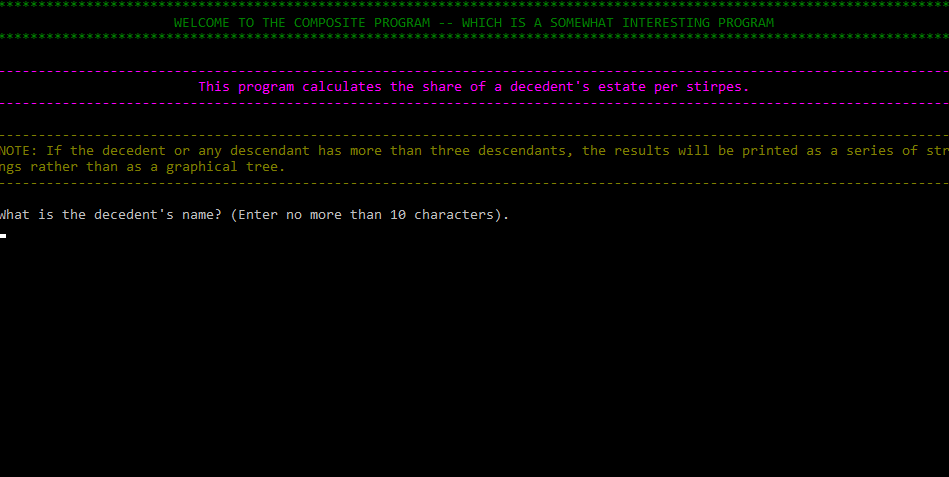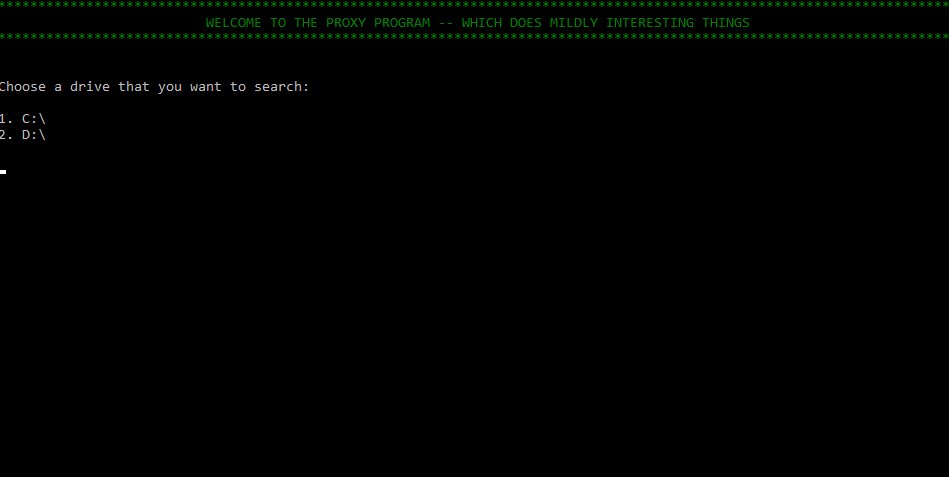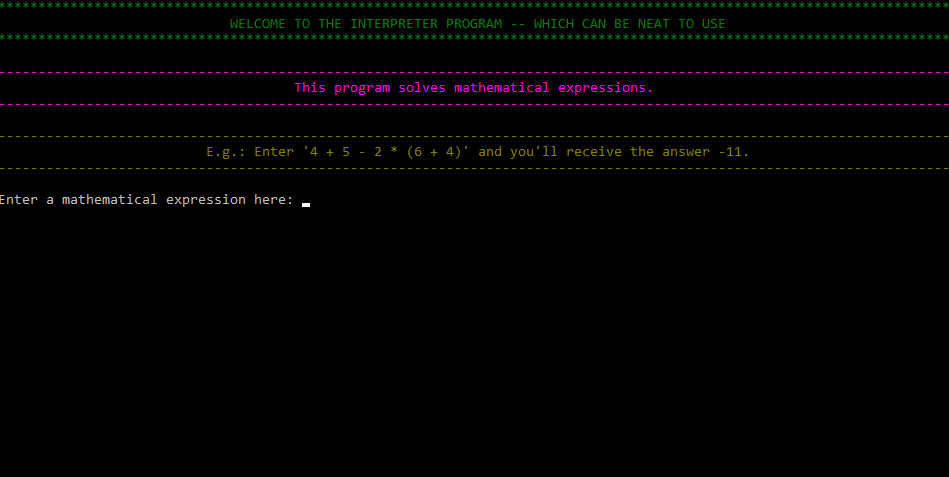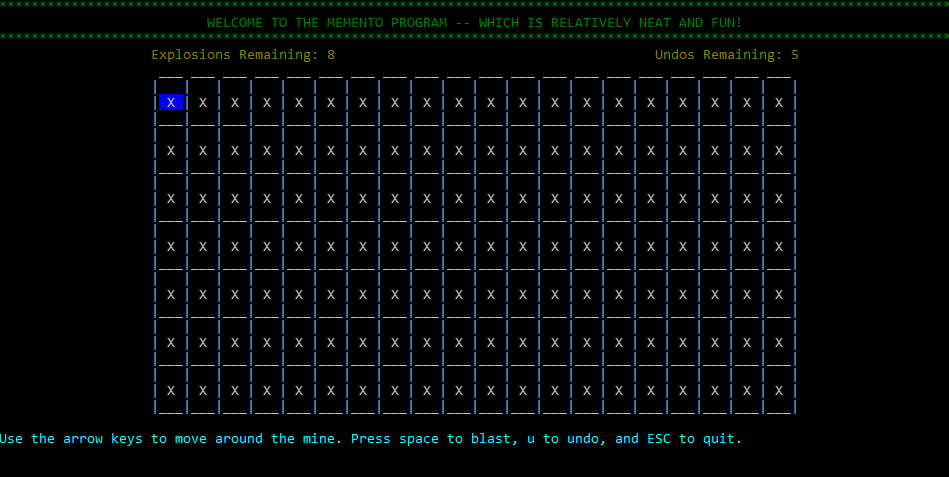This repo contains examples of common OOP design patterns.
Choose a character from among several interesting options. The builder pattern is used to build a class with the attributes corresponding to the character you chose. You can create your own character making a class that implements AbstractCharacterBuilder.
Choose a website from among a list of several classic sites, and the WebPageExplorer class, which implements .NET HttpClient, will return interesting information about that site. Pursuant to the prototype pattern, The client operates by creating a list of instances of WebPageExplorer by cloning an initial instance rather than constructing new instances.
The program will produce an array of random numbers after the user chooses the size of the array. Then, the program gives the user a choice of various sort methods. After the user chooses a method, the program uses the simple factory pattern to create an instance of a class that sorts the array according to the method that the user chose. Output shows how long it took to sort the array.
Did you come here for an argument? Good. Choose from a variety of topics on which to argue. If you get tired of arguing a certain topic, you can switch to a different topic. Every topic is a class registered with an IoC container which provides a only a single instance of each, which is in accord with the singleton pattern.
After making your way through some questions about yourself, the program will render a report regarding your answers. The report can render either as a simple list of the questions and the answers you provided, or it can show you your incorrect answers along with a total of your score. The adapter pattern allows render methods of various signatures to use the functionality that another render method provides.
Convert measurements from one type to another and print the output in either a simple or fancy style. The bridge pattern allows the conversion output to be formatted in various ways; i.e., any formatter that implements the IFormatter interface can be passed to any conversion class, which will format the output using the formatter.
Determine the distribution of a decedent's estate according to the per stirpes distribution scheme. The composite pattern allows the decedent to contain a collection of descendants, and each descendant to collection of their own descendants. In addition, the information will print to the console in a neat tree-like fashion:
Tell the program what town you're in, and you'll receive information about that town. If you want a broader perspective on things, the decorator pattern will wrap the town object in a decorator object that provides further information about the town. And if you want an even broader perspetive, you can keep wrapping the town in decorators until your perspective is all-encompassing...
Construct xml or json, and the program will print it to the console, convert it, then print the converted data to the console. In other words, if the user chooses to create xml, the program will take the user through the process of creating xml, print the xml to the console, convert the xml to json, then print the json to the console. The facade pattern simplifies the interaction with the functionality in the xml and json libraries.
Provide foreground and background colors for characters if you want. Then, type a string that you want printed to the console. Any characters in the string for which you provided custom colors will be printed with the colors you chose. (Also, the string will be printed in a descending-stair fashion, which is pretty neat!) The flyweight pattern allows classes representing characters with custom colors to be shared. The character's colors are part of the internal state of the class, and the character's y-position is its external state.
Choose a drive and file extension, and the program will recursively search the drive for files with the chosen extension. The proxy pattern allows the client to call a proxy class rather than the class that actually provides search functionality. The proxy class displays helpful information to the user, such as the percentage of files and bytes searched, and a status bar.
The clergymen are available to answer your questions. Which member of the clergy will answer depends on the philosophical depth of the question asked. The chain of responsibility pattern makes it easy for the question to be passed on to the clergyman in the next highest order in the church heirarchy if the current clergyman is unable to answer it.
A variety of interesting items are available to order. Choose items from a list and add them to an order, and remove later if you want. The command pattern makes it easy to add functionality to this simple application; just add a class implementing ICommand and the functionality it provides will automatically be available to the user.
Enter a mathematical expression and get the correct answer, or get an error message if your expression is malformed. The interpreter pattern is used to take the mathematical expression, which is provided as a string, and convert it into a series of mathematical operations, which are then resolved.
This is a simple program that allows the user to enter strings onto a custom stack object, which uses the iterator pattern to allow foreach to be called on the stack. When iterating the stack, the values are popped and written to the console.
Did you come here for a debate? Good, because the debators are ready for you. Enter any argument, and they'll each provide a well-reasoned response. The debate mediator, implemented with the mediator pattern, will ensure that each debator takes a turn and provides a unique response.
There is a treasure somewhere in the mine. Move through the mine and blast spaces in it to find the treasure. You only have a few chances! However, undo functionality implemented using the memento pattern allows you to undo a certain number of unsuccessful blasts.
Choose subscribers and publish news to them. The subscribers' responses to the news will in part be determined by whether the news is good or bad. The observer pattern allows for news publication to any number of subscribers, and makes it easy to unsubscribe any particular subscriber.
This math game starts off fairly easy, but the questions get more difficult as you answer more of them correctly. The state pattern is implemented to allow for easy transition from one level of difficulty to another.
This program calculates how much you owe in income taxes depending on the country in which you earned your money. Each country uses a different system to calculate income taxes, which can complicate the calculation. However, the strategy pattern allows for a separate class for each tax system, any of which can be passed to the CalculatorContext class.
The company has several departments to which you may apply for a job. Although the hiring process for every department consists of the same steps, each department's steps have slightly different implementations. The template method pattern makes it easy to preserve the order of the steps and ensure they all occur, while also allowing for different implementations.
After asking you a series of questions about various aspects of your person, this program will calculate your level of sophistication. It implements the visitor pattern to separate the calculation logic from the models containing personal-aspect information.



